House Cassavetes
Leatherworks
House Cassavetes Leatherworks
House Cassavetes Leatherworks located in Torcadino is back in business.
Note: Cassavetes Leatherworks has a location in Victoria that is currently operated by Marsus Nazario on behalf of the House Cassavetes.
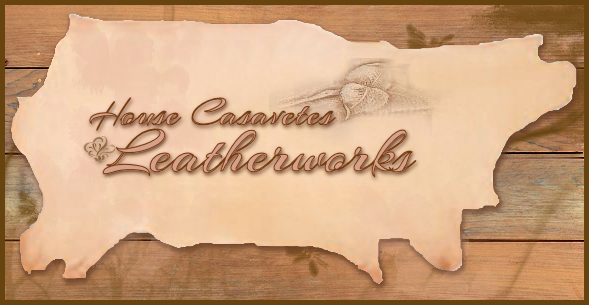
House Cassavetes Leatherworks is an artisan workshop not a merchandising shop. When you walk in, you will be allowed only as far as a front counter. Behind the counter you will see a vast room which seats a large worktable and a couple of additional counters, in addition to the vast array of items such as leather dyes and tools displayed on shelves.
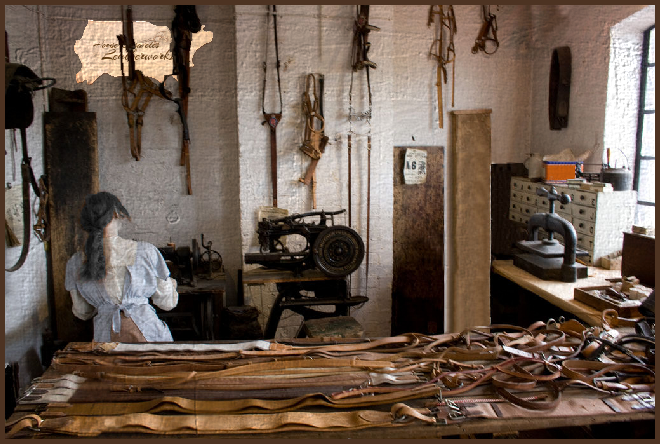
Please Bear in Mind
Most of the work involves the tanning of hides, however there are some specialty goods that are made here. Custom work can be requested, however Ayelen Cassavetes is limited on what she can and will manufacture. Because of the wide variety of things a leather worker can do, from tanning to tooling, and creating a variety of leather goods, a single person cannot know it all to do it all. This is why there would be separate and/or sub-castes for more defined work, such as cobblers (for shoes and boots), saddle makers and upholsterers. Also, of note, there are items inappropriate for a free woman to make, such as slave accourtements.
"Tor was, as Gorean cities went, rich, trading city. It was headquarters for thousands of caravan merchants. In it, too, were housed many craftsmen, practicing their industries, carvers, varnishers, table makers, gem cutters, jewelers, carders, dyers of cloth, weavers of rugs, tanners, makers of slippers, toolers of leather, potters, glaziers, makers of cups and kettles, weapon smiths, and many others." Tribesmen of Gor, page 38.
"There, are, on Gor, it might be mentioned, ways of raising and altering caste, but the Gorean seldom avails himself of these. To most Goreans it would be unthinkable to alter caste. He is generally too proud of his caste and it is too much a part of him for him to think in such terms. It is, too, recognized that all or most of the castes perform necessary commendable or useful functions. The Leatherworker, accordingly, does not spend much time envying the Metalworker, or the Metalworker the Leatherworker, or either the Cloth worker, and so on. All need sandals and wallets, and clothes, and metal tools. Each does, however, tend to think of his own caste as something special, and, somehow, I suspect, as being perhaps a little bit preferable to the others. Most Goreans are quite content with their castes; this is probably a function of caste pride." Fighting Slave of Gor, pages 210-211.
"There at various benches, attending to their work, measuring and stirring were apprentice perfumers though one is commonly born into a caste one is often not permitted to practice the caste craft until a suitable apprenticeship has been served. This guarantees the quality of the caste product. It is possible though it is seldom the case, that members of a caste are not permitted to practice specific caste skills, though they may permitted to practice subsidiary skills. For example, one who is of the Metalworkers might not be permitted to work iron but might be permitted to do such things as paint iron, and transport and market it. Caste rights, of course such as the right to caste support in time of need and caste sanctuary when in flight, which are theirs by birth remain theirs. The women of a given caste, it should he noted, often do not engage in caste work. For example, a woman in the Metalworker does not, commonly, work at the forgot nor is a woman of the Builders likely to be found supervising the construction of fortifications. Caste membership, for Goreans, is generally a simple matter of birth, it is not connected necessarily with the performance of certain skills, nor the attainment of given level of proficiency in such skills. To be sure, certain skills tend to be associated traditionally with certain castes, a fact which is clearly indicated in caste titles, such as the Leatherworkers, the Metalworkers, the Singers, and the Peasants." Fighting Slave of Gor, pages 209-210.
Leatherworks Price List |
||
Item Description |
Price |
Additional Information |
Leather Wallets |
||
Male Style |
65 Copper |
Sample 1 (Pictured Below) |
Female Style |
50 Copper |
Sample 2 (Pictured Below) |
Unisex Style |
55 Copper |
Sample 3 (Pictured Below) |
Belts |
||
Male (Only) |
55 Copper |
Women do not wear leather belts. |
Sword Sheaths |
||
Bosk Hide |
1 Silver |
Individual preferences and size of sheath required will determine actual cost. |
Leashes |
||
6 Merchant Foot |
45 Copper |
Bosk Hide |
8 Merchant Foot |
65 Copper |
Bosk Hide |
10 Merchant Foot |
85 Copper |
Bosk Hide |
Each additional |
15 Copper |
Specialty hides (such as sleen) costs will be determined on an individual basis. |
Tunics |
||
Small Build |
1 Silver |
Tabuk hide is an additional 20 Copper |
Medium Build |
1 Silver, |
Tabuk hide is an additional 40 Copper |
Large Build |
1 Silver, |
Tabuk hide is an additional 60 Copper |
Extra Large Build |
1 Silver, |
Tabuk hide is an additional 80 Copper |
Cloaks |
||
Free Men |
||
Cloak, no hood |
1 Silver, |
Verr Hide |
Cloak, no hood |
1 Silver, |
Tabuk Hide |
Cloak, with hood |
1 Silver, |
Verr Hide |
Cloak, with hood |
1 Silver, |
Tabuk Hide |
Free Women |
||
Cloak, no hood |
1 Silver, |
Verr Hide |
Cloak, no hood |
1 Silver, |
Tabuk Hide |
Cloak, with hood |
1 Silver, |
Verr Hide |
Cloak, with hood |
1 Silver, |
Tabuk Hide |
Designing Extras |
||
Leather Tooling |
25 Copper |
Feather or Flower (see samples displayed) |
Leather Tooling |
60 Copper minimum |
Custom Designs |
Designing Extras |
||
Leather Tooling |
25 Copper |
Feather or Flower (see samples displayed) |
Leather Tooling |
60 Copper |
Custom Designs |
Hide Tanning
This cost on average will be one (1) Silver, and will be determined on an individual basis. The determining factors are: * Type of animal (Tabuk, Bosk, et al) * Size of hide * Quality of hide
Wallet Design Samples
Sample 1: Leather Wallet (Male) |
Sample 1: Leather Wallet (Female) |
Sample 1: Leather Wallet (Unisex) |
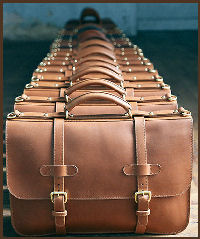 |
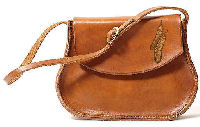 |
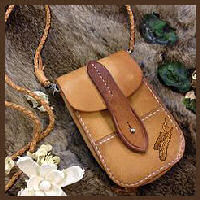 |
Tooling Design Samples
| Feather | Flower | Leaf |
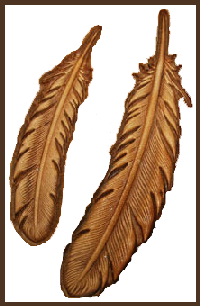 |
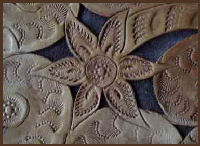 |
 |
Sword Sheath Samples
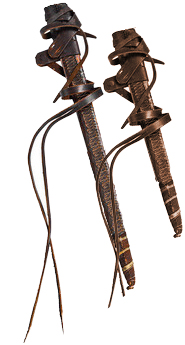 |
Made for Exevier of Minus |
Gorean Units of Measure
Hort
A unit of measure of distance, approximately 1-1/4 inches.
"The hort is approximately an inch and a quarter in length." — Tribesmen of Gor, page 49.
Merchant Foot
The accurate wording of the unit of measure, which Tarl Cabot referred to as the "Gorean Foot." See: "Gorean Foot."
"The Gorean foot, interestingly, is almost identical to the Earth foot. Both measures doubtless bear some distant relation to the length of the foot of an adult human male. The Gorean foot is, in my estimation, just slightly longer than the Earth foot; based on the supposition that each of its ten Horts is roughly one and one-quarter inches long, I would give the Gorean foot length of roughly twelve and one-half inches, Earth measure. Normally, incidentally, in giving measures, the Earth foot, unless otherwise specified, should be understood. It seems pertinent, however, in this instance, to state the ratios in Gorean feet, rather than translate into English measure, where the harmony of the proportions would be obscured. As in the case of the official 'Stone,' so, too, at the Sardar in a metal rod, which determines the Merchant Foot, or Gorean foot, as I have called it. Port Kar's Merchant Foot, like her 'Stone,' is kept in the arsenal, in the same building as her 'Stone.'" Raiders of Gor, pages 127-128.
![]()
Special Note
Because of the differences in publishing the books, depending upon whether published in the U.S. or Europe, depending upon whether a first publishing or a Masquerade Books release, page numbers will often vary. All of my quotes are from original, first-printing U.S. publications (see The Books page for a listing of publishers and dates) with the exception of the following books:
- Tarnsman of Gor (2nd Printing, Balantine)
- Outlaw of Gor (11th Printing, Balantine)
- Priest-Kings of Gor (2nd Printing, Balantine)
- Assassin of Gor (10th Printing, Balantine)
- Raiders of Gor (15th Printing, Balantine)
- Captive of Gor (3rd Printing, Balantine)
Disclaimer
These pages are not written for any specific home, but rather as informational pages for those not able to get ahold of the books and read them yourself. Opinions and commentaries are strictly my own personal views, therefore, if you don't like what you are reading — then don't. The information in these pages is realistic to what is found within the books. Many sites have added information, assuming the existences of certain products and practices, such as willow bark and agrimony for healing, and travel to earth and back for the collection of goods. I've explored the books, the flora, the fauna, and the beasts, and have compiled from those mentioned, the probabilities of certain practices, and what vegetation mentioned in the books is suitable for healing purposes, as well as given practicalities to other sorts of role playing assumptions.